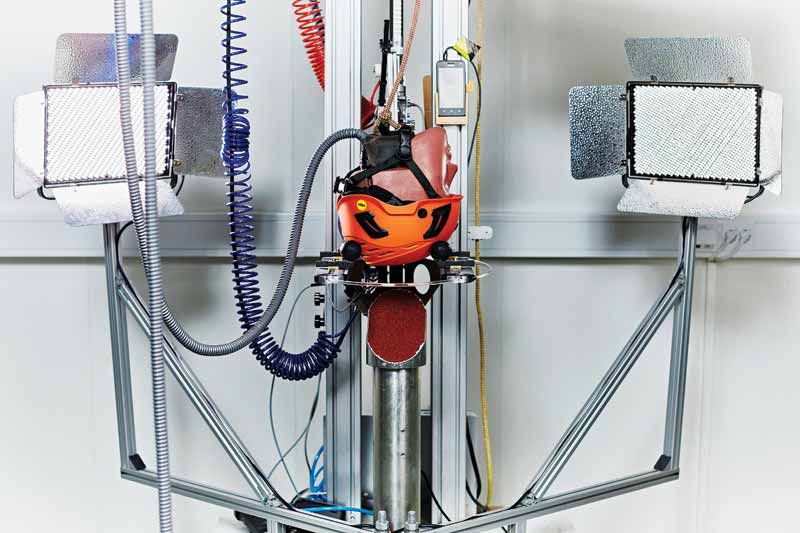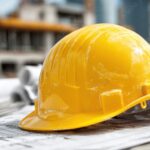
Metal construction is gaining impressive traction, with the industry projected to grow 4.8 percent by 2031, and the global market anticipated to increase by $12.7 billion in the next six years. As the popularity of metal continues to skyrocket–driving increased demand for metal workers’ expertise–the industry must make a concerted effort to help safeguard workers on the job.
Because of the physical properties of metal, working with the material brings significant safety risks. Metalworkers are at a high risk of cuts, burns, and falls from ladders and scaffolding. These risks require companies and workers to adhere to stringent safety guidelines and take precautions against accidents.
Common accidents for metalworkers
The construction industry is one of the most dangerous professions. In the United States alone, this line of work sees the highest number of fatal and non-fatal workplace-related traumatic brain injuries (TBIs). From 2003 to 2010, 2,210 employee fatalities were due to TBIs–representing 24 percent of all workplace-related TBI fatalities across industries. For roofers and structural iron and steel workers, the risks on the job are even higher, as employees in these industries had the highest fatal TBI rate among construction workers.
Over time, the causes of workplace injuries have been relatively unchanged, with slips, trips, and falls accounting for most workplace accidents. While there is a huge emphasis on protecting workers from machinery, the danger presented by falling objects, slips, trips, and falls cannot be overlooked, with falls leading to nearly half of all TBI hospitalizations in the United States.
These accidents can have dangerous outcomes. When someone’s head impacts the ground or a falling object, it typically occurs at an angle, exposing the head to rotational motion. Rotational motion can potentially lead to dangerous and even fatal brain injuries. Research indicates that when it comes to concussions, the brain is more sensitive to rotational motion than linear motion caused by any impact situation. This means concussions caused by rotational motion occur at lower levels of energy than in cases involving only linear motion. When rotation is a factor, even seemingly light impacts can lead to concussions.
How to provide a safer environment

Failure to protect workers on the job is costing the construction industry billions of dollars. The total annual cost of all construction injuries in the United States is estimated to be more than $11.5 billion.
For employers, the first step in safeguarding workers is to offer proper education about existing risks on the job. Providing employees with the knowledge necessary for them to protect their well-being is critical.
The Occupational Safety and Health Administration (OSHA) mandates the use of personal protective equipment (PPE) for worker’s eyes, face, head, and extremities—including protective clothing, respiratory devices, and protective shields and barriers. For workers who could be exposed to a head injury on the job from impact, falling, or flying objects, or are at risk of electrical shock and burns, they are required to wear a protective helmet.
While OSHA has measures in place to ensure workers are wearing appropriate PPE—including recently requiring their employees to transition from hard hats to safety helmets—standard helmets do not always protect against all the risks encountered on construction sites.
Choosing the right PPE
Before employees put on their PPE, urge them to inspect it for any damage or structural issues. If the equipment is not in good condition and safe, then neither is the worker. Use proper PPE for each application, as many injuries can be avoided by following this simple rule.
Employers can urge workers to wear a helmet that fits both securely and comfortably on their heads. This is one of the most important job site safety precautions.
Another important consideration is whether a helmet is equipped with a rotational motion mitigating system. The type of helmet worn can be just as important as ensuring helmets are worn in the first place. Workers should confirm their helmets meet current safety standards and are the correct type for the job at hand. Numerous years of scientific research into rotational motion have resulted in additional measures to mitigate its impacts. These systems enable material in the helmet to slide and move relative to the person’s head with an intended outcome of redirecting rotational energy to linear energy. Consequently, this helps to reduce the amount of rotational motion, which could otherwise be transferred to the head.
To keep workers safe, address the dangers and causes of TBIs, including rotational motion, providing greater awareness of the risks. Increased education about common accidents on the job will help inspire workers to take the necessary precautions while at work.
References
1 https://www.metalconstructionnews.com/articles/features/on-the-scene/
2 https://www.bls.gov/ooh/construction-and-extraction/sheet-metal-workers.htm#tab-3
3 https://blogs.cdc.gov/niosh-science-blog/2022/11/10/construction-helmets/#:~:text=Work%2Drelated%20Traumatic%20Brain%20Injury%20in%20Construction,
100%2C000%20full%20time%20equivalent%20workers).
4 https://blogs.cdc.gov/niosh-science-blog/2022/11/10/construction-helmets/
5 https://www.bls.gov/spotlight/2022/workplace-injuries-and-
job-requirements-for-construction-laborers/home.htm#:~:text=
Workers%20in%20construction%20and%20extraction,
96%20occurred%20among%20construction%20laborers.
6 https://www.cdc.gov/traumaticbraininjury/get_the_facts.html
8 https://gocontractor.com/blog/the-ten-injuries-that-cost-construction-companies-11-billion-annually/
10 https://www.osha.gov/laws-regs/standardinterpretations/
2004-02-20#:~:text=29%20CFR%201926.100(a)%20states,be%20protected%20by%20protective%20helmets.
Joe Brandel currently serves as business development manager for the North American industrial safety market at Mips, a market leader in helmet-based safety. He has been in the construction and industrial safety business for more than 20 years. Specializing in head protection, hand protection, fall protection, and other personal protective equipment, Joe has provided training for large and small companies throughout the Midwest. He has also provided solutions for a variety of industries, which have not only helped reduce costs but most importantly, created safer working environments for employees.





